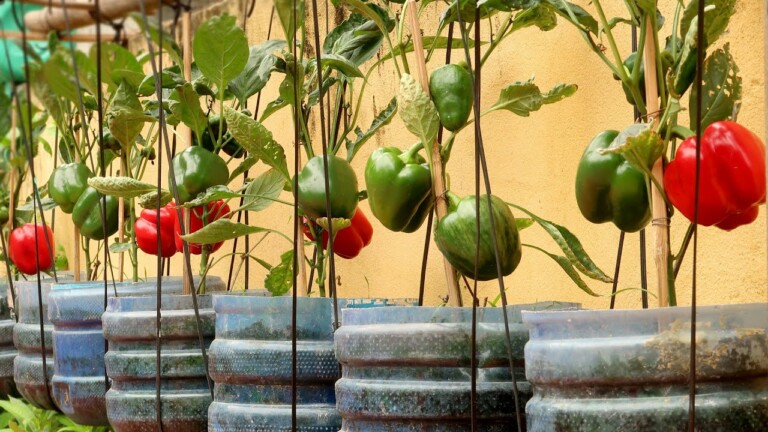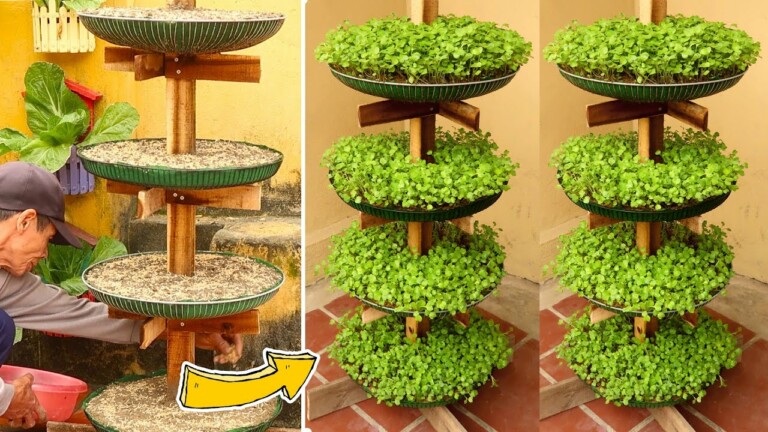No need for a garden, grow eggplant at home with many fruits and high yield
Are you tired of relying on store-bought eggplants? Why not embrace the joy of growing your own? With our expert tips and guidance, you can now cultivate eggplants right in the comfort of your own home. Say goodbye to the need for a garden, as we show you how to achieve a bountiful yield of delicious eggplants that are not only homegrown but also packed with flavor. Discover the satisfaction of plucking fresh eggplants from your very own plant, and enjoy the benefits of a high-yielding crop year after year. It’s time to embark on this exciting journey and turn your home into an eggplant haven. So, get ready to witness the magic unfold as you nurture your own eggplant garden!
Introduction
Do you love eggplants but don’t have a garden to grow them? Well, you’re in luck! You can actually grow eggplant at home without a garden. In this article, we’ll provide you with a step-by-step guide on how to grow eggplant in your own home, along with helpful tips and tricks to ensure a high yield. We’ll also share a video tutorial that will guide you through the process of growing eggplant. So, let’s get started and learn how to grow eggplant right in the comfort of your own home!
Step-by-Step Guide to Growing Eggplant at Home
1. Prepare the Soil
To start growing eggplant, you’ll need to prepare the soil. The presenter in the video tutorial explains how to mix the soil for growing vegetables. It’s important to create a well-drained soil mixture that is rich in organic matter. You can achieve this by using a combination of compost, garden soil, and sand. Make sure to mix these ingredients thoroughly and remove any rocks or debris.
2. Choose the Right Container
Since we’re growing eggplant without a garden, you’ll need to select the right container for your plants. Look for a container that is deep and wide enough to accommodate the root system of the eggplant. A pot with a diameter of at least 12 inches is recommended. Additionally, make sure the container has drainage holes to prevent waterlogging.
3. Sow the Seeds
Once you have your soil and container ready, it’s time to sow the eggplant seeds. You can purchase eggplant seeds from a local garden center or online. Following the instructions on the seed packet, plant the seeds at a depth of approximately half an inch. Space the seeds about 2 to 3 inches apart to allow room for growth. After sowing the seeds, gently water the soil to provide moisture for germination.
4. Provide Adequate Lighting
Eggplants require full sun to thrive, so it’s essential to provide them with adequate lighting. Place your container in an area where it can receive at least 6 to 8 hours of direct sunlight every day. If you don’t have access to natural sunlight, you can use artificial grow lights to ensure your eggplants get the light they need.
5. Water Regularly
Proper watering is crucial for the growth of your eggplants. Keep the soil consistently moist, but not waterlogged. Water the plants whenever the top inch of soil feels dry to the touch. Avoid overwatering, as it can lead to root rot and other issues. Additionally, it’s recommended to water the plants from the base rather than overhead to prevent water splashing on the leaves.
6. Provide Support
As your eggplant plants grow, they may need support to prevent them from toppling over. You can use stakes or trellises to provide support for the stems. Gently tie the plants to the support structure using soft garden twine. This will help keep the plants upright and promote better air circulation.
7. Fertilize Wisely
To ensure a high yield, it’s important to fertilize your eggplant plants regularly. Start by applying a balanced organic fertilizer when the plants are about 6 to 8 inches tall. Follow the package instructions for the correct application rate. Additionally, you can side-dress the plants with compost every few weeks to provide a constant supply of nutrients.
8. Monitor for Pests and Diseases
Like any other plant, eggplants are susceptible to pests and diseases. Keep an eye out for common eggplant pests such as aphids, flea beetles, and tomato hornworms. If you notice any signs of damage or infestation, take immediate action to prevent further damage. You can use organic insecticides or natural pest control methods to protect your plants.
Conclusion
Growing eggplant at home without a garden is easier than you might think. By following the steps mentioned above and providing the right conditions, you can enjoy a bountiful harvest of eggplants right from your own home. Remember to watch the video tutorial provided to get a visual guide on the process. We hope this information has been useful for you, and we encourage you to give it a try. Happy eggplant growing!
FAQs (Frequently Asked Questions)
-
Can I grow eggplants in pots?
Yes, you can grow eggplants in pots as long as you provide the right conditions such as adequate lighting, well-drained soil, and proper watering. -
How long does it take for eggplants to grow?
On average, it takes about 70 to 85 days for eggplants to reach maturity and start producing fruits. -
Do I need to start eggplants from seeds, or can I buy seedlings?
You can start eggplants from seeds or purchase seedlings from a local nursery. Both methods can be successful, depending on your preference and availability. -
Can I grow eggplants indoors?
Yes, you can grow eggplants indoors as long as you provide them with sufficient light, either through natural sunlight or artificial grow lights. -
How many eggplants can I expect to harvest from one plant?
The number of eggplants you can harvest from one plant depends on various factors, including the variety, growing conditions, and care provided. On average, a healthy eggplant plant can produce 5 to 10 fruits or even more.






